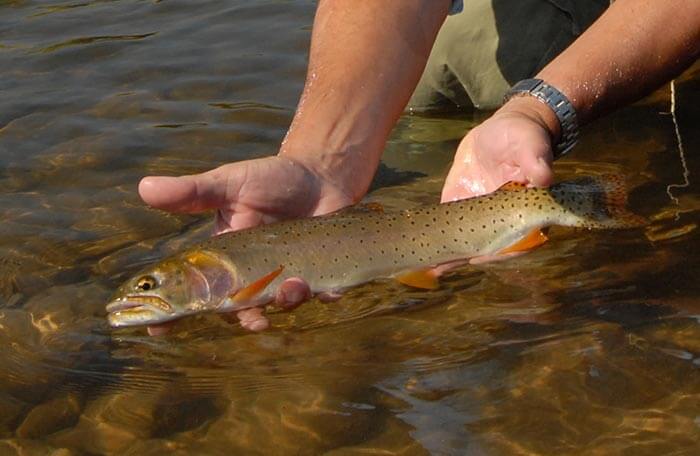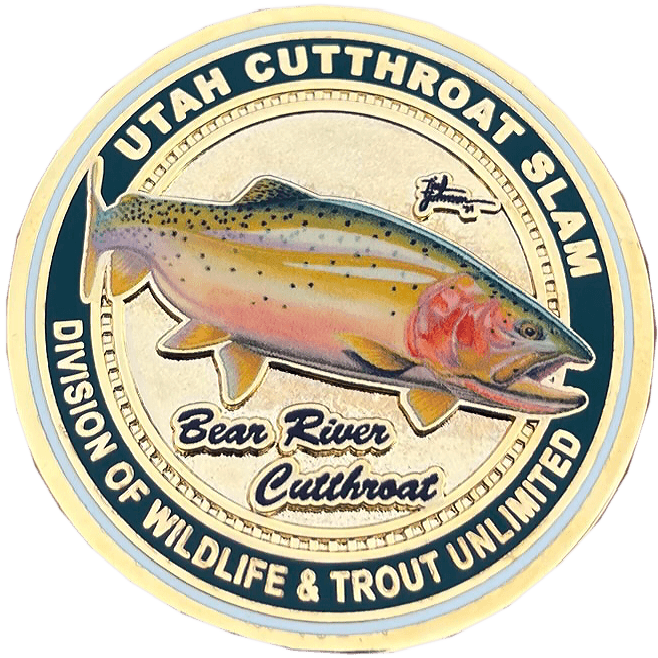
09 Aug Orvis Slam Story, Day Two: Downstream Effects
Original Story found HERE from Orvis News. Story by Phil Monahan
On the second day of our Utah Cutthroat Slam adventure, TU’s Jim DeRito wanted to head downstream on the Bear River to see how the habitat work in the headwaters benefited the fishery below. Bear River cutthroats are “fluvial,” which means that they travel within the river system as part of their life history—living in the main river but heading up small tributaries and the headwaters of the main stem to spawn. Therefore, providing connected spawning habitat is vital to a healthy population.

Photo by Fred Hays
Unlike the freestone stretch we fished on Day One, the lower river meanders through rangeland, offering deep corner holes and cuttbanks. Since the morning was chilly, I decided to start with a conehead streamer. About three casts in, I felt a heavy fish strike the fly, and my 5-weight developed a pretty good bend during the initial fight. I was excited by the prospect that I’d hooked a trophy cutthroat, but when the fish rolled on the surface, I saw nothing but silver. I know that some anglers would be disappointed to discover a whitefish at the end of the line, but I’ve always had a soft spot for these natives. Plus, this was one of the larger ones I’ve ever caught, and on a big streamer, no less.

Photo by Phil Monahan
My buddy Fred landed the first cutthroat this time, a six-incher that rose to his dry fly. And soon we were both into the fish, although things were certainly a lot slower than they had been the night before. The highlight of the day was the big cutthroat at the top of this page, which Fred caught on a dry drifted through a deep slot above a big pool. I landed a pretty good brown before I caught my own good-size cutthroat, while stripping a small streamer along the bottom of a deep pool.

Photo by Jim DeRito
Jim’s point in bringing us to this stretch was well taken. The downstream effects of the Upper Bear River Reconnect and Flow Restoration Project—which aims to restore as much as 35 cfs the East Fork and Bear River mainstem and to reconnect high-quality spawning habitat to the main river—seemed pretty evident by the beautiful trout we caught. The next day, we were scheduled to visit one of the projects funded by the Orvis/TU 1,000 Miles Campaign, which would give us a chance to see Orvis customers’ donations in action.
Come back tomorrow for Part III.
Click here for more information about the Utah Cutthroat Slam.
Click here to read Part I.

Photo byJim DeRito

Sorry, the comment form is closed at this time.